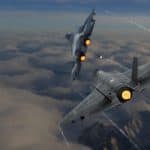The relaxation of restrictions by the Biden administration and the UK government on ATACMS and Storm Shadow missiles has placed Russia in a precarious position, pushing it to decide between hastening conflict resolution or ramping up aggression. This change has allowed Ukraine to strike deeper into Russian-held areas, which presents unique challenges for Moscow.
Rather than seeking a resolution, Russia escalated tensions with a significant missile attack targeting Ukraine’s essential infrastructure. The attack, which caused civilian casualties and property damage, occurred just after the inaugural ATACMS hit in the Kursk region. Additionally, North Korean troop presence has increased, reaching beyond their previously recognized areas, adding to the complexity.
The situation is exacerbated by the difficulties Russia faces in the Kursk region, where Ukrainian forces now have improved artillery capabilities against Russian positions due to new Western supplies. This enhances Ukraine’s strategic positioning, making a simple ceasefire less appealing for Russia, which is unwilling to accept territorial reductions.
The unrest among displaced residents in the Kursk area further strains the Kremlin, as government accountability for the conflict is called into question. While Russia has the theoretical option of escalating via battlefield nuclear weapons, practical challenges and potential international fallout seem to prevent this course.
Amid public dissent and bureaucratic dysfunction, the possibility of sabotage or intensified missile attacks emerges as alternatives. However, any such actions could backfire, prompting increased Western aid to Ukraine. For now, Russia grapples with how to respond to this shifting military landscape, with its choices carrying significant global ramifications.
What the Shift in Missile Policies Means for Global Peace and Technology Evolution
The recent decision by the Biden administration and the UK government to relax restrictions on the deployment of ATACMS and Storm Shadow missiles represents a significant geopolitical move with far-reaching implications. As Ukraine uses these advanced missile systems to gain an upper hand against Russian forces, the global landscape stands at a technological and strategic crossroads.
How Advanced Missile Technologies Influence Modern Warfare
The introduction of systems like the ATACMS and Storm Shadow brings precision striking capabilities to Ukraine, altering the dynamics of territorial defense and attack. These advanced technologies emphasize the importance of high-tech weaponry in modern conflict, enabling small, agile forces to challenge more powerful adversaries. The boost in Ukraine’s artillery capabilities poses questions about the future of land warfare and how technology can level the playing field.
Unlike traditional artillery, which might have been inferior in range and precision, the modern missile systems can precisely target critical infrastructure and military setups. This development forces nations to reconsider their defense architectures, giving rise to new technologies and military doctrines focused on countering such high-tech threats.
Advantages and Disadvantages of Advanced Warfare Technologies
Advantages:
– Enhanced Precision: Modern missiles reduce collateral damage by hitting precise targets.
– Technological Superiority: Nations equipped with cutting-edge military technology hold significant strategic advantages.
– Deterrence Factor: The mere presence of advanced systems can deter potential aggressors.
Disadvantages:
– Escalation Risks: Advanced technologies can lead to heightened tensions, potentially escalating conflicts.
– Global Arms Race: As countries strive to match their adversaries’ capabilities, a costly arms race could follow.
– Ethical Concerns: There are increased risks of civilian casualties if these technologies are misused.
Ethical Implications and Global Responsibility
As advanced missiles become integral to military strategy, ethical questions regarding their deployment and impact arise. How does the world balance technological superiority with humanitarian concerns? Can new defense strategies provide security without escalating tensions?
Western nations, by supporting Ukraine, might set a precedent that encourages similar support in future conflicts. This raises ethical issues regarding the selective provision of advanced weaponry to nation-states involved in regional disputes.
Controversies and Public Opinion
The relaxation of restrictions has sparked debate about Western intervention in foreign conflicts. Should nations other than those directly involved in a dispute dictate the balance of power through technological support? Public opinion remains divided, as many fear the consequences of deeper global involvement.
How This Affects Future Technological Development
The current situation underscores the symbiotic relationship between military needs and technological innovation. As nations allocate significant resources to defense research and development, spillover effects often result in civilian applications of technologies initially developed for military purposes. Innovations in missile guidance and surveillance systems can evolve into civilian sectors, driving progress in automation, communications, and data analysis.
Increasing dependence on such advanced systems also stresses the need for robust cybersecurity measures, as technological warfare in the modern age often includes cyberattacks on logistical and command systems. These evolving complexities amplify the demand for skilled personnel and innovative solutions in cybersecurity, affecting academia and tech industries globally.
Related Links:
For more information on international military strategies, visit the NATO website.
As the situation unfolds, the world watches closely to see if these technological advancements will drive humanity towards peace through deterrence or push nations further into an era of unprecedented military competition and geopolitical tension.



















